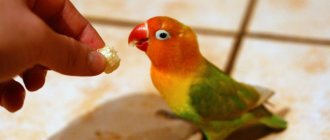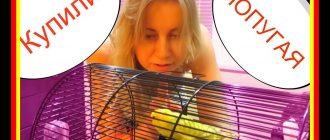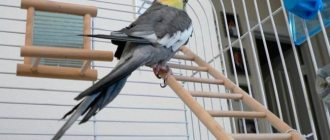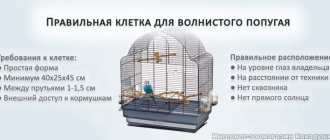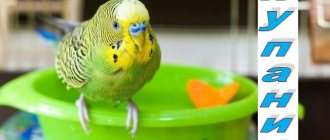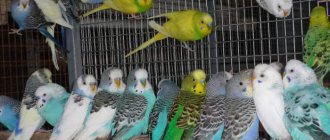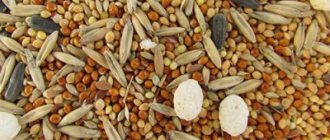Often, bird owners turn to the veterinarian with the question, why is my parrot’s beak peeling? Is this a disease? What caused the delamination? How to fix it? The answers to all questions are contained in our article.
Let's start with how the beak of a healthy parrot (budgerigar, lovebird, cockatiel) should look like. It should be shiny and smooth, evenly colored. If dullness, darkening, peeling, deformation, chips, cracks, or holes are present, this is a signal to take care of the bird’s well-being.
Healthy beak
Reasons why a parrot's beak is peeling
If you notice that your pet (whether it is a budgie, lovebird, African Gray, cockatiel or any other) has uneven edges of its beak, there is no need to worry yet. This is often due to the natural processes of the bird wearing down its nose. She gnaws on a mineral stone, a cuttlefish shell or a fruit twig and in this way shortens her horny areas.
Young budgerigars often have peeling edges on their beaks. These are natural processes of body growth and cell renewal. But damage to the entire surface is an alarming signal.
Change doesn't happen overnight. Initially, roughness appears on a smooth surface along the edges. Then the beak begins to thin out, becomes fragile, and the first detachments appear in the form of hangnails. Afterwards, cracks appear, which can increase when the parrot chews hard food and twigs.
When the beak of budgerigars begins to peel off, the cere also changes: it becomes rough to the touch, and small cracks appear.
Every owner should understand that such chips and cracks are painful for the pet. It is important to know why they appear and how to help the bird get rid of the problem. There are several reasons why a parrot’s beak peels:
- poor nutrition and, as a result, metabolic disorders;
- vitamin deficiency - birds become lethargic, drowsy, apathetic, refuse to eat;
- lack of mineral supplements;
- excessively dry indoor air;
- there are no branches on which the bird can grind its nose;
- illness;
- injuries;
- Sometimes when molting, the beak can also peel off a little.
Causes
Beak defects arise due to the following circumstances:
- unbalanced diet;
- knemidocoptosis;
- injuries;
- excessive dry air.
The beak is exfoliating
Unbalanced diet
Beak damage is caused by a deficiency or excess of vitamins or calcium. In the first case, monotonous feeding with unbalanced feed mixtures is to blame. This happens when you independently produce food from individual components that are poor in calcium and vitamins. If you add a crushed source of mineral to the feeder with the main food, for example, crushed chalk or a metal compound with glucose, phosphorus ceases to be absorbed, which leads to demineralization of the beak. Excess vitamins when added to food or water can have worse effects than not enough.
Excessive indulgence in soft foods - cereals, baby food, fruits, as well as the lack of twig food leads to hypertrophy of the edges of the jaws. They do not wear down, grow, or become injured.
Knemidocoptosis
Infection with Knemidocoptes mites develops when the immune defense is weakened. Inadequate maintenance is added to feeding errors. The parrot may be too cold or too hot. He is overcome by drafts, spoiled children and cats, a stress reaction occurs, and the mite is activated. First, the paws are affected, and if it is not shown to an ornithologist veterinarian, the disease spreads to the beak and cere.
With knemidocoptic mange, the beak peels off
Injuries
A parrot can injure its nutritional organ on objects that are poorly placed in the cage, during a fight when feeding a neighbor, or in the absence of food. A sudden change in diet from soft food to hard food overloads the unstitched edges, chips form, blood supply is disrupted, starving textures become necrotic and peel off.
Excessive dry air
Drying out occurs in the summer heat or when the cage is located near a heating radiator. Microcracks develop and expand when hard food is chewed.
What to do if a parrot's beak is peeling
The most important thing is to understand the cause of the problem, and then it will become clear what to do when the parrot’s beak begins to peel.
- In case of acute deficiency of minerals and vitamins, in addition to correcting the diet, be sure to add special complexes of vitamins and minerals, give grain sprouts, and offer small quantities of hard-boiled eggs or cottage cheese twice a week. Budgerigars, like everyone else, need to mix crushed eggshells, feed yeast, and chalk with food. Hang sepia and mineral stone on the bars of the cage - they will not only enrich the pet with minerals, but gnawing on them will contribute to the natural grinding of the horny areas.
- If the beak grows excessively, or if the bird has injured it and it begins to peel off, the excess stratum corneum is carefully trimmed with special scissors, without touching the blood vessels. An overgrown beak cannot be left without such trimming, as this risks breaking off the beak.
Fractures and injuries
With severe bruises, cracks and chips appear on the horny tissue. The plates are split and the jaw bones are displaced. Where blood circulation is impaired, you can see that the beak has darkened. Less commonly, partial tearing of the organ occurs. Parrots, which contain several individuals in one cage, sometimes fight for territory. Violently attacking each other, the rivals inflict serious injuries and damage on each other. One of the most serious consequences of a fight is the tearing of the beak.
If the wound is relatively small, the veterinarian seals the crack with special glue and secures it with wire. Over time, a stratum corneum will grow in place of the broken part. But with a longitudinal fracture, a lot of effort is required to restore the functions of the beak and avoid tissue necrosis. It is difficult to leave a bird with such an injury, because you will have to feed it soft food for a very long time, while protecting it from unnecessary activity.
Prevention
Everyone knows the truth: it is easier to avoid a disease than to treat it later. When a parrot's beak peels off, in most cases, this indicates the owner's inattention to his pet. Try to protect the bird from such an unpleasant condition. Create optimal conditions for her:
- regularly clean and disinfect the cage and all equipment in it;
- replace old branches with new ones, previously scalded with boiling water;
- provide the parrot with constant access to mineral supplements (sand, sepia, mineral stone);
- maintain optimal humidity in the room, do not allow dry air, especially during the heating season, and especially do not install a cage with a bird near heating devices;
- provide a varied diet and conduct vitamin therapy courses twice a year;
- the perches in the cage should be made of wood, it is best if they are strong branches with bark - thanks to such a rough structure, the bird will wear down its beak and claws;
- toys should also be wooden;
- Lighting is very important for birds, in winter - at least 8 hours, in summer - at least 12 hours;
- Examine your pet regularly to notice an impending illness in time and begin to take action.
Knemidocoptosis
If the beak turns black or grows back, this is not the worst thing that can happen to a parrot. It is much worse if the bird becomes infected with parasites. These microscopic mites of the genus Knemidocoptes infect non-feathered areas of the body: paws, wax, area around the eyes. Pests live in the epidermis and feed on skin flakes. Their movements and waste products cause severe itching. Ticks are not visible during normal examination, but their presence is indicated by the following symptoms:
- the bird itches intensely and pecks its paws;
- growths appear on the wax;
- crusts accumulate around the eyes;
- plaque on the beak.
In the advanced stage of the disease, the mites move to the beak, it peels off, and its structure is destroyed. Due to the abundance of internal channels, it becomes loose and porous. Getting rid of scabies mites is not easy, you need a systematic approach. To begin with, the bird is isolated from other pets. Disinfect the cage and change all equipment. Aversectin ointment or Vaseline oil is applied daily to the skin and keratinized surface. The course of treatment is from two weeks to a month.
How to treat at home
Treatment should be started only after the cause has been eliminated. If it cannot be determined, contact your veterinarian. He will take a scraping, and after a laboratory test, treatment will be prescribed. If the reason is an unbalanced diet, think over your pet’s diet. The correct menu includes:
- grain mixture - the composition should contain sunflower seeds, oats and millet;
- greens - clover, plantain, dandelion;
- fresh vegetables - pumpkin, zucchini, cucumbers;
- berries - cherries, rowan, strawberries;
- fruits - bananas, apples (you must first remove the peel from them);
- a mixture of cottage cheese and semolina;
- boiled egg mixed with bread crumbs;
- eggshells and chalk - to prevent beak delamination.
Important!
Give your pet fresh food that is free of garbage, mold and strong odors.
Do not offer your parrot foods that are difficult to digest - spices, sweets, eggplants or radishes. Due to the additional burden on the body, the disease will take longer to treat. Uneaten food cannot be stored - it must be thrown away.
What to do if your budgerigar’s beak is peeling:
- If the problem is dry air, invest in a humidifier. If this is not possible, hang wet towels next to the cage. Place containers of water near the battery. Periodically spray your pet with warm water from a spray bottle.
- If the beak is peeling due to knemidocoptosis, use novertin or aversectin ointment for treatment. Apply the product to a cotton swab and lubricate the damaged areas of your pet’s body. Avoid contact with mucous membranes or wounds. Apply a thin layer. It is advisable to first melt the drug in a water bath.
The treatment regimen depends on the stage of the disease. In advanced cases, daily treatment is required for the first week. Then - once every 3 days until the ticks disappear. At the initial stage of the disease - 1 time every 4 days.
Important!
When the growths disappear, apply the ointment 2 more times.
At the end of the course of treatment, the parrot needs to be given vitamins A and B. During therapy, it is necessary to wash the cage with detergent, then scald it with boiled water. Temporarily replace wooden objects with plastic ones. Chalk pebbles should be thrown away. Plastic toys can be used in the future, but during treatment they need to be washed and taken out into fresh air.
Do a wet cleaning of the room. Treat wooden objects that were near the cage with Virkon or Virotsid and rinse with water after a few minutes. If the bird was not kept alone in the cage, the remaining parrots must be quarantined.
When should you contact a veterinarian? Signs of problems when treating a parrot.
If the solution gets into the nose and bubbles out of the nostrils, this is unpleasant, but most often, it is not dangerous for the parrot.
If, after giving the drug, the parrot coughs, sneezes, hiccups, makes some sounds, or sits with its wings hanging down, contact your avian doctor ASAP. Remember that it is better to bother your doctor one more time than to waste time!
Syringes used to administer drugs into the beak MUST HAVE REMOVABLE NEEDLES. Never try to feed a bird with a syringe needle! Most often, insulin syringes are used to treat birds, although large syringes of 2, 5, 10 ml are also used to give large volumes of solutions. Regardless of the volume of the syringe, the size of its tip (cannula) is the same for all syringes.
Softening
Another trouble that can happen to a parrot is a softening of the beak. This occurs when there is a lack of calcium and B vitamins. In addition, the stratum corneum softens under the influence of fungi or due to infections - viral, bacterial. Tissues become brittle and mobile. The bird protects its beak and cannot peck grain or care for its feathers. This condition is dangerous due to the presence of microcracks into which food gets, decomposes and serves as a source of infection.
Hypovitaminosis is corrected with the help of veterinary drugs: Gamavit, Beaphar (Beafar), Vinka (Vinka). If the defect appears due to an infectious disease, diagnosis and treatment are carried out by a veterinarian.
Attention! Until the beak gets stronger, the parrot needs to be given semi-liquid, crushed foods. Cracks should be treated with medicine, after removing food particles.
How can you give drugs into the beak without dying from stress or being left without a finger?
It is possible to completely avoid stress in a parrot during treatment only if you have worked with the bird before, your bird knows the commands, and you know the bird, you are not afraid to hold it in your hands because you already know how to hold it in your hands - in In this ideal case, neither the bird nor you worry. How good. By the way, parrots are even trained to take blood from a vein; Here is a video of such an example: a hyacinth macaw is trained to give a wing for drawing blood. Fantastic? No, just proper training of the bird. See:
Now it's a different case. The bird is sick, and you have no idea how to hold it, what kind of commands there are, you yourself would not faint from the cries of the parrot. It is important to remember here that the owner has much more stress from any manipulations with the bird than the parrot itself. Therefore, we pull ourselves together and take step number one - catch the bird.
How to catch a parrot?
Step number one - catch the bird. It doesn’t matter that your parrot screams and rushes about (since you’ve come to this kind of life, you have no choice) - it’s important to do everything as quickly as possible. In the case of Grays, Amazons, Cockatoos, Aratingas, Necklaces and Alexandrine parrots, a terry towel is suitable, and a blanket or thick jacket is suitable for catching macaws. Budgerigars, cockatiels and pirrur are easier and faster to catch by hand. Gloves are only good if they are comfortable, and if they are thick mittens, they will only hinder your ability to catch your budgie.
How to hold a parrot?
Step number two - fix the bird in your hand. After the parrot has been caught, the first thing you need to do is fix its head. Even if you wrapped the parrot in a towel and only its head sticks out, it (the head) needs to be fixed, otherwise everything around will be stained with medicine, the syringe will be eaten, and the bird will choke.
The head fixation is the same for all types of parrots (from small wavy birds, lovebirds, to cockatoos and African grays). So, the three-finger rule. To do this you will need three of your fingers and a bird's head. You place your index finger on top of the parrot's head so that your finger almost touches the wax. With your thumb and middle finger, clasp the bird's head under the cheeks so that your fingers rest against the corner of the parrot's lower jaw. Remember that your fingers do not just lie in these three planes, but they firmly fix the head. Don’t be afraid, even a budgie’s neck cannot be broken with such a grip; you will not harm the bird at all.
The parrot's body is either in a towel or lies completely in your palm (in this case, you additionally secure small parrots with your little finger, which presses the paws and folded wings).
Only after you have securely held the parrot's head in your hand can you begin to inject drugs into the beak. If the head slips out, take a break and catch it again correctly. It is the reliable fixation of the head that is the guarantee that the bird will not choke, choke, choke or bite you.
How to give medicines into the beak?
Step number three - give medications. The first few times, while the parrot has not yet figured out what you want from him and why you are putting the syringe in his beak, he himself grabs the tip of the syringe with the solution and, furiously gnawing on it, expresses everything he thinks about this. Your task is not to get confused, but to do your job: slowly squeeze the drug into the parrot’s beak. It is important to administer the drug slowly, without jerking, so that the angry parrot has time to swallow. This way you can give even the most bitter drugs several times, then the parrot will realize that this is exactly your goal and will not react to the syringe presented.
What to do if the parrot does not open its beak and does not want to drink from a syringe?
In this case, you just need to drop a drop of the drug into the corner of the beak, or put the tip of the syringe into the corner of the beak, and SLOWLY inject the solution. Oh miracle!!! The drug itself is absorbed into the depths of the parrot's beak. Bingo!!
You will enjoy this consequence of the surface tension of liquids for a couple of days at most - then the next challenge! It seems that you gave a full portion of the medicine, and the parrot (as soon as you let go of it or simply loosened your grip on your fingers) spat it all out!!! It turns out that everything you just gave him with such difficulty, the parrot collected in his lower jaw and spat - your hands gave up.
So, the parrot takes the drugs into its beak and spits. Your actions: while injecting drugs into the angle between the upper and lower jaws, you need to take breaks and scratch the mandible . Not a single parrot, parrot, parrot, can withstand such treachery; Even the most vehemently hating parrot, when scratched, will definitely make a movement with its tongue and swallow everything it holds in its beak. This is what you need - immediately, without hesitation, continue to squeeze out the remaining drug from the syringe in small portions. IMPORTANT! Do not collect the entire underbelly of solutions; Portions should be small!
Here is a video that shows very clearly how to treat a parrot and how to properly administer medications to the beak. Pay attention to the movement of the bird's tongue, this is a sure sign that the bird is swallowing solutions and is not fooling you:
Congenital diseases
It happens that a bird is born with a similar problem. Unfortunately, in most cases it is impossible to correct the situation in such a situation. You can help the chick only by assisting it during feeding. You need to feed every three hours. Over time, the bird will learn to drink and peck food on its own. An adult budgie with congenital beak disease has the following sad characteristics:
- breathing heavily
- rarely flies
- cannot repeat sounds correctly
- The beak opens and closes incorrectly.
The good news is that despite his serious illness, he will be able to live with your help.
What methods of administering (giving) drugs to parrots exist?
There are two ways to give medicine to a bird: by injection (parenteral method of administration, i.e. injections) and by giving the drug into the beak (oral method of administration). Each of these methods has its own indications (i.e., conditions under which one or another method of administering drugs is more optimal and possible).
Injections.
Giving injections is technically easy, but you must first be instructed by a bird doctor, know how to hold a bird, and have the courage to give injections. It seems that everything is simple, but with long-term treatment (even if performed correctly) from injections, the bird develops necrosis of the pectoral muscle, which externally manifests itself in the form of sores on the skin. This is a serious problem, the consequences of which will have to be dealt with for many years. Therefore, most often when treating parrots and other birds, medications are given into the beak.
Giving drugs into the beak.
Giving drugs into a parrot's beak is a technically more difficult task than injections, because few people know how to hold a parrot correctly (the parrot actively resists, bites, and screams). And the most important thing is that if the solution is poured into the beak incorrectly, aspiration will occur, i.e. the solution will enter the trachea, bronchi and further into the lungs (it looks like a parrot choked). This is a very dangerous situation. The bird can die within a few minutes if too much of the drug enters the trachea at once. But even if the volume of the aspirated drug is very small, this will lead to the development of tracheitis (inflammation of the trachea), and/or pneumonia; in this case, if measures are not immediately taken to prevent the development of inflammation, the birds will die from aspiration pneumonia after a few weeks or months; In addition, the measures themselves to prevent the consequences of getting into the trachea may not always be sufficient due to the anatomical features of the respiratory system of birds.
vkdoc.ru
Aspiration is the main danger that exists when administering medications to a parrot's beak.
Can medications be given in drinking water?
After such a dire warning, the question arises: are there any ways to treat a parrot when the drugs are given completely safely? Yes, they exist, and this is the provision of drugs in food. I am not currently considering adding drugs to drinking water, since the class of drugs that can be given in drinking water is very small (such drugs must, on the one hand, be effective, and on the other hand, be safe if the dosage is significantly exceeded - after all, it is not known exactly how much water a parrot will drink). And if you give the medicine in food, then it’s easy to monitor whether the bird has received the right amount of the drug.
How to give medicine with food?
The simplest examples of such a dacha are the introduction of solutions into berries and fruits (for example: grapes, cranberries, rowan berries, pieces of peach, watermelon, apple). An excellent technique - the dosage can be strictly observed, you can be sure that the bird has definitely received everything that was prescribed by the bird doctor. Beauty! - but figs))) Because the majority of parrot owners do not eat juicy fruits, vegetables, berries at all until the first illness (and, accordingly, until the first appearance at the avian doctor). These owners don’t even know what to feed the birds, and as a result, when a bird is sick, it won’t suddenly begin to eat berries and fruits that are unfamiliar to it. Bam! Here it is, another disadvantage of ignoring methods of active socialization of parrots.
In addition to berries, fruits and vegetables, medications can be given in mashed potatoes (it turns out that potatoes can be given to parrots both raw and boiled, and in the form of puree (without milk)), in yogurt, cottage cheese (yay - it turns out that fermented milk products can be given to parrots ! - so...here they stop reading the article and fall off with an angry cry in the public pages “AAA first bricks, avocado, mango, oak - now also kefir!!!”, in juices (and then they shout with a scream, nizya-nizya, in juices sugar), in a solution of honey (this is also tough - there are those who are afraid to give honey to birds), in porridges (well, everything seems to be nice here, people like to give porridge to parrots; and this is perhaps the only plus of having porridge in diets parrots - porridges are well suited for the treatment of parrots), in feed mixtures for feeding parrots (there are more and more nurselings - :(pichalka).
It’s good if you teach the bird to eat something from a spoon in advance, it will be easier for you when you need to give something without the bird noticing. But even if you are super responsible and work with the bird, it eats succulent food, fruit purees and potatoes, it may happen that the bitterness of the drugs cannot be masked by anything and the smart bird will refuse to eat delicious yogurt with the addition of an antibiotic. By the way, don’t be afraid - after you stop adding anything to the yogurt, the parrot will start eating it again. In general, we again come to the conclusion that it is necessary to be able to give medicine into a bird’s beak.


